- Home
- Bill Bryson
Made In America Page 2
Made In America Read online
Page 2
They were, in short, dangerously unprepared for the rigours ahead, and they demonstrated their manifest incompetence in the most dramatic possible way: by dying in droves. Six expired in the first two weeks, eight the next month, seventeen more in February, a further thirteen in March. By April, when the Mayflower set sail back to England*2 just fifty-four people, nearly half of them children, were left to begin the long work of turning this tenuous toehold into a self-sustaining colony.5
At this remove, it is difficult to conceive just how alone this small, hapless band of adventurers was. Their nearest kindred neighbours – at Jamestown in Virginia and at a small and now all but forgotten colony at Cupers (now Cupids) Cove in Newfoundland*3 – were five hundred miles off in opposite directions. At their back stood a hostile ocean, and before them lay an inconceivably vast and unknown continent of ‘wild and savage hue’, in William Bradford’s uneasy words. They were about as far from the comforts of civilization as anyone had ever been (certainly as far as anyone had ever been without a fishing line).
For two months they tried to make contact with the natives, but every time they spotted any, the Indians ran off. Then one day in February a young brave of friendly mien approached a party of Pilgrims on a beach. His name was Samoset and he was a stranger in the region himself, but he had a friend named Tisquantum from the local Wampanoag tribe, to whom he introduced them. Samoset and Tisquantum became the Pilgrims’ fast friends. They showed them how to plant corn and catch wildfowl and helped them to establish friendly relations with the local sachem, or chief. Before long, as every schoolchild knows, the Pilgrims were thriving, and Indians and settlers were sitting down to a cordial Thanksgiving feast. Life was grand.
A question that naturally arises is how they managed this. Algonquian, the language of the eastern tribes, is an extraordinarily complex and agglomerative tongue (or more accurately family of tongues), full of formidable consonant clusters that are all but unpronounceable to the untutored, as we can see from the first primer of Algonquian speech prepared some twenty years later by Roger Williams in Connecticut (a feat of scholarship deserving of far wider fame, incidentally). Try saying the following and you may get some idea of the challenge:
Nquitpausuckowashâwmen – There are a hundred of us.
Chénock wonck cuppee-yeâumen? – When will you return?
Tashúckqunne cummauchenaûmis – How long have you been sick?
Ntannetéimmin – I will be going.6
Clearly this was not a language you could pick up in a weekend, and the Pilgrims were hardly gifted linguists. They weren’t even comfortable with Tisquantum’s name; they called him Squanto. The answer, surprisingly glossed over by most history books, is that the Pilgrims didn’t have to learn Algonquian for the happy and convenient reason that Samoset and Squanto spoke English. Samoset spoke it only a little, but Squanto spoke English with total assurance (and Spanish into the bargain).
That a straggly band of English settlers could in 1620 cross a vast ocean and find a pair of Indians able to welcome them in their own tongue seems little short of miraculous. It was certainly lucky – the Pilgrims would very probably have perished or been slaughtered without them – but not as wildly improbable as it at first seems. The fact is that in 1620 the New World wasn’t really so new at all.
II
No one knows who the first European visitors to the New World were. The credit generally goes to the Vikings, who reached the New World in about AD 1000, but there are grounds to suppose that others may have been there even earlier. An ancient Latin text, the Navigatio Sancti Brendani Abbatis (The Voyage of St. Brendan the Abbot), recounts with persuasive detail a seven-year trip to the New World made by this Irish saint and a band of acolytes some four centuries before the Vikings – and this on the advice of another Irishman who claimed to have been there earlier still.
Even the Vikings didn’t think themselves the first. Their sagas record that when they first arrived in the New World they were chased from the beach by a group of wild white people. They subsequently heard stories from natives of a settlement of Caucasians who ‘wore white garments and ... carried poles before them to which rags were attached’7 – precisely how an Irish religious procession would have looked to the uninitiated. (Intriguingly, five centuries later Columbus’s men would hear a similar story in the Caribbean.) Whether by Irish or Vikings – or Italians or Welsh or Bretons or any of the other many groups for whom credit has been sought – crossing the Atlantic in the Middle Ages was not quite as daring a feat as it would at first appear, even allowing for the fact that it was done in small, open boats. The North Atlantic is conveniently scattered with islands that could serve as stepping-stones – the Shetland Islands, Faeroes, Iceland, Greenland and Baffin. It would be possible to sail from Scandinavia to Canada without once crossing more than 250 miles of open sea. We know beyond doubt that Greenland – and thus, technically, North America – was discovered in 982 by one Eric the Red, father of Leif Ericson (or Leif Eríksson), and that he and his followers began settling it in 986. Anyone who has ever flown over the frozen wastes of Greenland could be excused for wondering what they saw in the place. But in fact Greenland’s southern fringes are further south than Oslo and offer an area of grassy lowlands as big as the whole of Britain.8 Certainly it suited the Vikings. For nearly five hundred years they kept a thriving colony there, which at its peak boasted sixteen churches, two monasteries, some 300 farms and a population of 4,000. But the one thing Greenland lacked was wood with which to build new ships and repair old ones – a somewhat vital consideration for a sea-going people. Iceland, the nearest land mass to the east, was known to be barren. The most natural thing would be to head west to see what was out there. In about 1000, according to the sagas, Leif Ericson did just that. His expedition discovered a new land mass, probably Baffin Island, far up in northern Canada, over a thousand miles north of the present-day United States, and many other places, most notably the region they called Vinland.
Vinland is one of history’s more tantalizing posers. No one knows where it was. By careful readings of the sagas and calculations of Viking sailing times, various scholars have put Vinland all over the place – on Newfoundland or Nova Scotia, in Massachusetts or even as far south as Virginia. A Norwegian scholar named Helge Ingstad claimed in 1964 to have found Vinland at a place called L’Anse au Meadow in Newfoundland. Others suggest that the artefacts Ingstad found were not of Viking origin at all, but merely the detritus of later French colonists.9 No one knows. The name is no help. According to the sagas, the Vikings called it Vinland because of the grape-vines they found growing in profusion there. The problem is that no place within a thousand miles of where they must have been could possibly have supported grapes. One possible explanation is that Vinland was a mistranslation. Vinber, the Viking word for grapes, could be used to describe many other fruits – cranberries, gooseberries and red currants, among them – that might have been found at these northern latitudes. Another possibility is that Vinland was merely a bit of deft propaganda, designed to encourage settlement. These were after all the people who thought up the name Greenland.
The Vikings made at least three attempts to build permanent settlements in Vinland, the last in 1013, before finally giving up. Or possibly not. What is known beyond doubt is that sometime after 1408 the Vikings abruptly disappeared from Greenland. Where they went or what became of them is unknown.10 The tempting presumption is that they found a more congenial life in North America.
There is certainly an abundance of inexplicable clues. Consider the matter of lacrosse, a game long popular with Indians across wide tracts of North America. Interestingly, the rules of lacrosse are uncannily like those of a game played by the Vikings, including one feature – the use of paired teammates who may not be helped or impeded by other players – so unusual, in the words of one anthropologist, ‘as to make the probability of independent origin vanishingly small’. Then there were the Haneragmiuts, a tribe of Inuits living high
above the Arctic Circle on Victoria Island in northern Canada, a place so remote that its inhabitants were not known to the outside world until early this century. Yet several members of the tribe not only looked unsettlingly European but were found to be carrying indubitably European genes.11 No one has ever provided a remotely satisfactory explanation of how this could be. Or consider the case of Olof and Edward Ohman, father and son respectively, who in 1888 were digging up tree stumps on their farm near Kensington, Minnesota, when they came upon a large stone slab covered with runic inscriptions, which appear to describe how a party of thirty Vikings had returned to that spot after an exploratory survey to find the ten men they had left behind ‘red with blood and dead’. The inscriptions have been dated to 1363. The one problem is how to explain why a party of weary explorers, facing the prospect of renewed attack by hostile natives, would take the time to make elaborate carvings on a rock deep in the American wilderness, thousands of miles from where anyone they knew would be able to read it. Still, if a hoax, it was executed with unusual skill and verisimilitude.
All this is by way of making the point that word of the existence of a land beyond the Ocean Sea, as the Atlantic was then known, was filtering back to Europeans long before Columbus made his epic voyage. The Vikings did not operate in isolation. They settled all over Europe and their exploits were widely known. They even left a map – the famous Vinland map – which is known to have been circulating in Europe by the fourteenth century. We don’t positively know that Columbus was aware of this map, but we do know that the course he set appeared to be making a beeline for the mythical island of Antilla, which featured on it.
Columbus never found Antilla or anything else he was looking for. His epochal voyage of 1492 was almost the last thing – indeed almost the only thing – that went right in his life. Within eight years, he would find himself summarily relieved of his post as Admiral of the Ocean Sea, returned to Spain in chains and allowed to sink into such profound obscurity that even now we don’t know for sure where he is buried. To achieve such a precipitous fall in less than a decade required an unusual measure of incompetence and arrogance. Columbus had both.
He spent most of those eight years bouncing around the islands of the Caribbean and coasts of South America without ever having any real idea of where he was or what he was doing. He always thought that Cipangu, or Japan, was somewhere near by and never divined that Cuba was an island. To his dying day he insisted that it was part of the Asian mainland (though there is some indication that he may have had his own doubts since he made his men swear under oath that it was Asia or have their tongues cut out). His geographic imprecision is most enduringly preserved in the name he gave to the natives: Indios, which of course has come down to us as Indians. He cost the Spanish crown a fortune and gave in return little but broken promises. And throughout he behaved with the kind of impudence – demanding to be made hereditary Admiral of the Ocean Sea, as well as Viceroy and Governor of the lands that he conquered, and to be granted one-tenth of whatever wealth his enterprises generated – that all but invited his eventual downfall.
In this he was not alone. Many other New World explorers met misfortune in one way or another. Juan Díaz de Solís and Giovanni da Verrazano were eaten by natives. Balboa, after discovering the Pacific, was executed on trumped-up charges, betrayed by his colleague Francisco Pizarro, who in his turn ended up murdered by rivals. Hernando de Soto marched an army pointlessly all over the south-western US for four years until he caught a fever and died. Scores of adventurers, enticed by tales of fabulous cities – Quivira, Bimini, the City of the Caesars and Eldorado (’the gilded one’) went looking for wealth, eternal youth, or a shortcut to the Orient and mostly found misery. Their fruitless searches live on, sometimes unexpectedly, in the names on the landscape. California commemorates a Queen Califía, unspeakably rich but unfortunately non-existent. The Amazon is named for a tribe of one-breasted women. Brazil and the Antilles recall fabulous, but also fictitious, islands.
Further north the English fared little better. Sir Humphrey Gilbert perished in a storm off the Azores in 1583 after trying unsuccessfully to found a colony on Newfoundland. His half-brother Sir Walter Raleigh attempted to establish a settlement in Virginia and lost a fortune, and eventually his head, in the effort. Henry Hudson pushed his crew a little too far while looking for a north-west passage and found himself, Bligh-like, being put to sea in a little boat, never to be seen again. The endearingly hopeless Martin Frobisher explored the Arctic region of Canada, found what he thought was gold and carried 1,500 tons of it home on a dangerously overloaded boat only to be informed that it was worthless iron pyrite. Undaunted, Frobisher returned to Canada, found another source of gold, carted 1,300 tons of it back and was informed, no doubt with a certain weariness on the part of the royal assayer, that it was the same stuff. After that, we hear no more of Martin Frobisher.
It is interesting to speculate what these daring adventurers would think if they knew how whimsically we commemorate them today. Would Giovanni da Verrazano think being eaten by cannibals a reasonable price to pay for having his name attached to a toll bridge between Brooklyn and Staten Island? I suspect not. De Soto found transient fame in the name of an automobile, Frobisher in a distant icy bay, Raleigh in a city in North Carolina, a brand of cigarettes and a type of bicycle, Hudson in several waterways and a chain of department stores. On balance, Columbus, with a university, two state capitals, a country in South America, a province in Canada and high schools almost without number, among a great deal else, came out of it pretty well. But in terms of linguistic immortality no one got more mileage from less activity than a shadowy Italian-born businessman named Amerigo Vespucci.
A Florentine who had moved to Seville where he ran a ship supply business (one of his customers was his compatriot Christopher Columbus), Vespucci seemed destined for obscurity. How two continents came to be named in his honour required an unlikely measure of coincidence and error. Vespucci did make some voyages to the New World (authorities differ on whether it was three or four), but always as a passenger or lowly officer. He was not, by any means, an accomplished seaman. Yet in 1504-5, there began circulating in Florence letters of unknown authorship, collected under the title Nuovo Mundo (New World), which stated that Vespucci had not only been captain of these voyages but had discovered the New World.
The mistake would probably have gone no further except that an instructor at a small college in eastern France named Martin Waldseemüller was working on a revised edition of Ptolemy and decided to freshen it up with a new map of the world. In the course of his research he came upon the Florentine letters and, impressed with their spurious account of Vespucci’s exploits, named the continent in his honour. (It wasn’t quite as straightforward as that: first he translated Amerigo into the Latin Americus and then transformed that into its feminine form, America, on the ground that Asia and Europe were feminine. He also considered the name Amerige.) Even so it wasn’t until forty years later that people began to refer to the New World as America, and then they meant by it only South America.
Vespucci did have one possible, if slightly marginal, claim to fame. He is thought to have been the brother of Simonetta Vespucci, the model for Venus in the famous painting by Botticelli.12
III
Since neither Columbus nor Vespucci ever set foot on the land mass that became the United States, it would be more aptly named for Giovanni Caboto, an Italian mariner better known to history by his Anglicized name of John Cabot. Sailing from Bristol in 1495, Cabot ‘discovered’ Newfoundland and possibly Nova Scotia and a number of smaller islands, and in the process became the first known European to visit North America, though in fact he more probably was merely following fishing fleets that were trawling the Grand Banks already. What is certain is that in 1475, because of war in Europe, British fisherman lost access to the traditional fishing grounds off Iceland. Yet British cod stocks did not fall, and in 1490 (two years before Columbus sailed) when Icelan
d offered the British fishermen the chance to come back, they declined. The presumption is that they had discovered the cod-rich waters off Newfoundland and didn’t want anyone else to know about them.13
Whether Cabot inspired the fishermen or they him, by the early 1500s the Atlantic was thick with English vessels. A few came to prey on Spanish treasure ships, made sluggish and vulnerable by the weight of gold and silver they were carrying back to the Old World. Remarkably good money could be made from this.*4 On a single voyage Sir Francis Drake returned to England with booty worth $60 million in today’s money.14 On the same voyage, Drake briefly put ashore in what is now Virginia, claimed it for the crown and called it New Albion.15
To give the claim weight, and to provide a supply base for privateers, Queen Elizabeth I decided it might be an idea to establish a colony. She gave the task to Sir Walter Raleigh. The result was the ill-fated ‘lost colony’ of Roanoke, whose 114 members were put ashore just south of Albemarle Sound in what is now North Carolina in 1587. From that original colony sprang seven names that still feature on the landscape: Roanoke (which has the distinction of being the first Indian word borrowed by English settlers), Cape Fear, Cape Hatteras, the Chowan and Neuse rivers, Chesapeake and Virginia.16 (Previously Virginia had been called Windgancon, meaning ‘what gay clothes you wear’ – apparently what the locals had replied when an early reconnoitring party had asked them what they called the place.) But that alas was about all the colony achieved. Because of the war with Spain, no English ship was able to return for three years. When at last a relief ship called, it found the colony deserted. For years afterwards, visitors would occasionally spot a blond-haired Indian child, and the neighbouring Croatoan tribe was eventually discovered to have incorporated several words of Elizabethan English into its own tongue, but no firmer evidence of the colony’s fate was ever found.

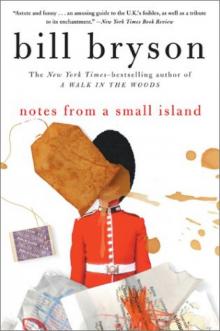 Notes from a Small Island
Notes from a Small Island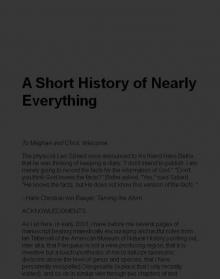 A Short History of Nearly Everything
A Short History of Nearly Everything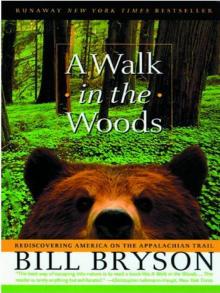 A Walk in the Woods
A Walk in the Woods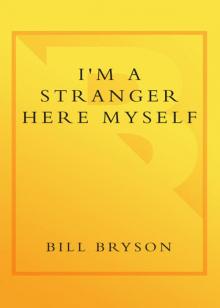 I'm a Stranger Here Myself
I'm a Stranger Here Myself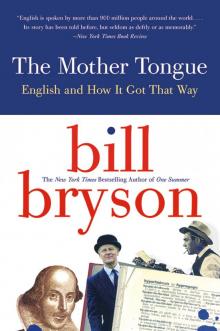 The Mother Tongue
The Mother Tongue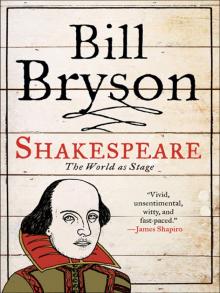 Shakespeare
Shakespeare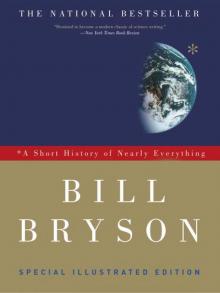 A Short History of Nearly Everything: Special Illustrated Edition
A Short History of Nearly Everything: Special Illustrated Edition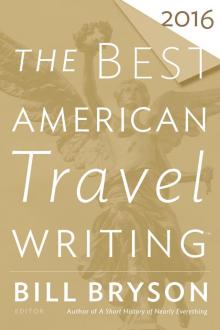 The Best American Travel Writing 2016
The Best American Travel Writing 2016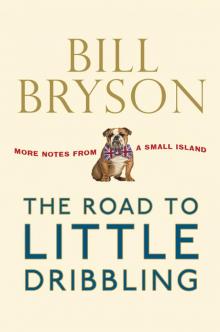 The Road to Little Dribbling
The Road to Little Dribbling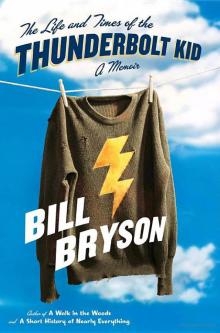 The Life And Times Of The Thunderbolt Kid: A Memoir (v5.0)
The Life And Times Of The Thunderbolt Kid: A Memoir (v5.0)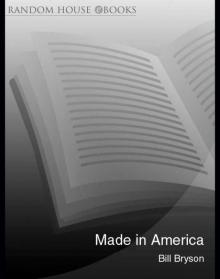 Made In America
Made In America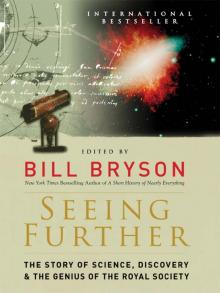 Seeing Further
Seeing Further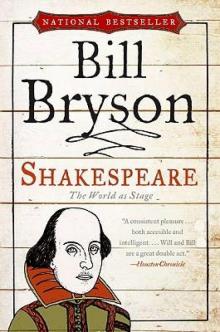 Shakespeare: The World as Stage
Shakespeare: The World as Stage The Life and Times of the Thunderbolt Kid
The Life and Times of the Thunderbolt Kid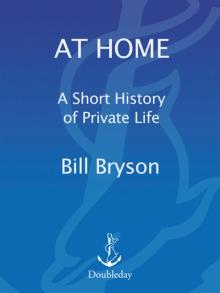 At Home
At Home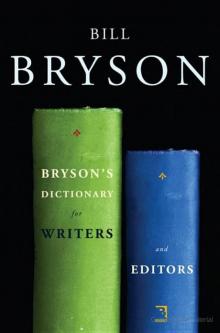 Bryson's Dictionary For Writers And Editors (v5.0)
Bryson's Dictionary For Writers And Editors (v5.0)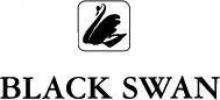 Neither Here Nor There
Neither Here Nor There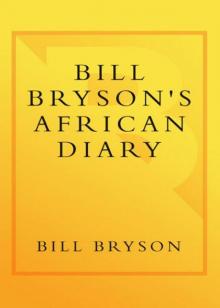 Bill Bryson's African Diary
Bill Bryson's African Diary